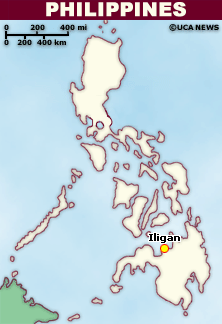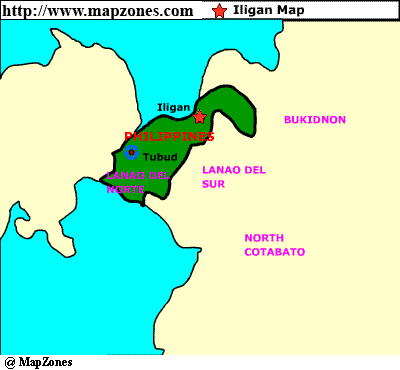
-
МјРЇСІИёСЖШИМі
-
 И№ОЫ КИОЫ Йъ ЗЛЦЎЧЯБт~ ИЎСЖЦЎ ПЙОрБюСі
И№ОЫ КИОЫ Йъ ЗЛЦЎЧЯБт~ ИЎСЖЦЎ ПЙОрБюСі 89,457
89,457 -
 [ЧЪИЎЧЩ ММКЮ] ФЋИ№ХзНК ПЉЧр 100Йш СёБтБт
[ЧЪИЎЧЩ ММКЮ] ФЋИ№ХзНК ПЉЧр 100Йш СёБтБт 48,900
48,900 -
 ИЖДвЖѓ НУГЛ - ИЎРп АјПјСЄКИ. (ЛчСј 16Рх ЦїЧд)
ИЖДвЖѓ НУГЛ - ИЎРп АјПјСЄКИ. (ЛчСј 16Рх ЦїЧд) 30,789
30,789 -
 ММКЮРЧ СіПЊСЄКИ15,529
ММКЮРЧ СіПЊСЄКИ15,529 -
 ИЖДвЖѓ БйБГ - ЕћАЁРЬЕћРЬ ПЉЧр СЄКИ14,341
ИЖДвЖѓ БйБГ - ЕћАЁРЬЕћРЬ ПЉЧр СЄКИ14,341 -
 [ЧЪИЎЧЩ ММКЮ/ИЗХК] ШЃХк МїЙк ПфБн Йз СЄКИ13,319
[ЧЪИЎЧЩ ММКЮ/ИЗХК] ШЃХк МїЙк ПфБн Йз СЄКИ13,319 -
 КИЖѓФЋРЬРЧ И№Еч И№НРРЛ КММі РжДТ ЛчСјУИ.13,132
КИЖѓФЋРЬРЧ И№Еч И№НРРЛ КММі РжДТ ЛчСјУИ.13,132 -
 ИЖДвЖѓ БйБГ - ЦХЛѓЧб ЦјЦї ПЉЧрСЄКИ12,831
ИЖДвЖѓ БйБГ - ЦХЛѓЧб ЦјЦї ПЉЧрСЄКИ12,831 -
 [ММКЮ-ЙшМБТјРх] МБЙкШИЛч РќШЙјШЃПЁПф~12,445
[ММКЮ-ЙшМБТјРх] МБЙкШИЛч РќШЙјШЃПЁПф~12,445 -
 ИЖДвЖѓ СіПЊ(ПЁИЃЙЬХИ -ИЛЖѓХз)РЧ СіЕЕ/ЧбБЙ РННФСЁ/МюЧЮИє12,112
ИЖДвЖѓ СіПЊ(ПЁИЃЙЬХИ -ИЛЖѓХз)РЧ СіЕЕ/ЧбБЙ РННФСЁ/МюЧЮИє12,112


The City of Iligan (Cebuano: Dakbayan sa Iligan; Tagalog: Lungsod ng Iligan) is a highly urbanized industrial
city north of the province of Lanao del Norte, Philippines, and the province's former capital. It is approximately
795 kilometers southeast of Manila. According to the 2007 census, it has a population of 318,040 people.
History
Iligan City had its beginnings in the village of Palao, north of the present Poblacion. It was the earliest
pre-Spanish settlement of native sea dwellers. The monotony of indigenous life in the territory was broken when
in the later part of the 16th century, the inhabitants were subdued by the Visayan migrants from the island
kingdom of Panglao. In the accounts of Jesuit historian Francisco Combes, the Mollucan King of Ternate
invaded Panglao. This caused Panglaons to flee in large numbers to Dapitan City|Dapitan, Zamboanga del
Norte. In Dapitan, the surviving Prince of Panglao, Pagbuaya, received Legazpi's expedition in 1565. Later,
Pagbuaya's son Manook was baptized Pedro Manuel Manook. The Christianized Manook subdued the Higaunon village in Bayug and established it as one of the earliest Christian settlements in the country. The settlement
survived other raids from other enemies, and, because of their faith in God and in their patron saint, Saint Michael the Archangel, the early Iliganons moved their settlement from Bayug to Iligan. The name Iligan is from the
Higaonon word iligan or ilijan' meaning "fortress of defense" against frequent attacks by pirates and other hostile Mindanao tribes.
Geography
Iligan City is bounded on the north by the 3 municipalities of Misamis Oriental (namely Lugait, Manticao and
Opol), to the south by the 3 municipalities of Lanao del Norte (Baloi, Linamon and Tagoloan) and the 2 municipali
ties of Lanao del Sur (Kapai and Tagoloan II), to the northeast by Cagayan de Oro City, to the east by the municipality of Talakag, Bukidnon; and to the west by Iligan Bay. This is also the 2nd largest city in Northern Mindanao next to Malaybalay City, capital of Bukidnon Province.
Known as the City of Majestic Waterfalls, there are around 23 waterfalls in and around Iligan. Among them is
the Maria Cristina Falls, home of Mindanao's primary hydroelectric power station, and Limunsudan Falls.
Iligan is also the Industrial Center of the South. It produces hydroelectric power for the Mindanao region through
the National Power Corporation (NAPOCOR), the site of the Mindanao Regional Center (MRC) housing Agus IV,
VI and VII hydroelectric plants. It also houses industries like steel, tinplate, cement and flourmills. The National
Steel Corporation, one of the largest steel manufacturers in the Southeast Asian region, now Global Steelworks
International Incorporated was re-opened in 2003 after heavy setbacks resulting to its closure in 1999. Iligan along with its neighboring city, Cagayan de Oro City, are the two major components for the Cagayan de Oro-Iligan
Corridor, the fastest developing area in Northern Mindanao.
To the west, Iligan Bay provides ferry and container ship transportation. East of the city, flat cultivated coastal l
and gives way to steep volcanic hills and mountains providing the waterfalls and cold springs for which the area is well known.
Climate
Iligan falls within the third type of climate wherein the seasons are not very pronounced. Rain is more or less
evenly distributed throughout the year. Because of its tropical location the city does not experience cold weather. Neither does it experience strong weather disturbances due to its geographical location (being outside the
typhoon belt) And also because of the mountains that are surrounding the city.
Economy
The economy of Iligan is largely based on heavy industries. After the construction of Maria Cristina (Agus VI)
Hydroelectric Plant by National Power Corporation (NPC, NAPOCOR) in 1950, the city experienced rapid industrialization and continued until the late 1980s. The largest steel plant in the country, National Steel Corporation (NSC), was also established during that period (Specifically in 1962).During the 1997 Asian Financial Crisis, the city
experienced severe slowdown in terms of economic growth. A good number of industrial plants are closed,
notably the National Steel Corporation. Its closure also created a domino effect on its ancillary industries,
causing some companies to close shop while putting others in grave financial distress.
- ЁЄ
- ЁЄ
- ЁЄ
- ЁЄryWvMVxeet
- ЁЄryWvMVxeet
- ЁЄryWvMVxeet\'\"\\(
- ЁЄryWvMVxeetщ\'\"\\(
- ЁЄryWvMVxeet
- ЁЄryWvMVxeet
- ЁЄryWvMVxeet
- ЁЄryWvMVxeet
- ЁЄryWvMVxeet
- ЁЄryWvMVxeet
- ЁЄryWvMVxeet
- ЁЄryWvMVxeet















 ЧЪРкДхФФ ОпАЃЛѓДу ПРЧТ
ЧЪРкДхФФ ОпАЃЛѓДу ПРЧТ 12ГтПЌМг МвКёРкИИСЗ 1РЇ
12ГтПЌМг МвКёРкИИСЗ 1РЇ
 ГЛАд ИТДТ ОюЧаПј УЃБт
ГЛАд ИТДТ ОюЧаПј УЃБт
 ИЎОѓ ЧаБГ ЙцЙЎБт
ИЎОѓ ЧаБГ ЙцЙЎБт
 СжИЛПЁ ГЛАЁ ОЕ КёПыРК?
СжИЛПЁ ГЛАЁ ОЕ КёПыРК? УжАэАЁМККё РЬКЅЦЎ СёБтБт
УжАэАЁМККё РЬКЅЦЎ СёБтБт
 ЧіСіПЁМЕЕ ЧЪРкДхФФ!
ЧіСіПЁМЕЕ ЧЪРкДхФФ! ЧіСіПЁМ АЁДЩЧб
ЧіСіПЁМ АЁДЩЧб









 ЧЪРк ЦЏБо Ч§ХУ! ФСНУОюСі МКёНК
ЧЪРк ЦЏБо Ч§ХУ! ФСНУОюСі МКёНК
































